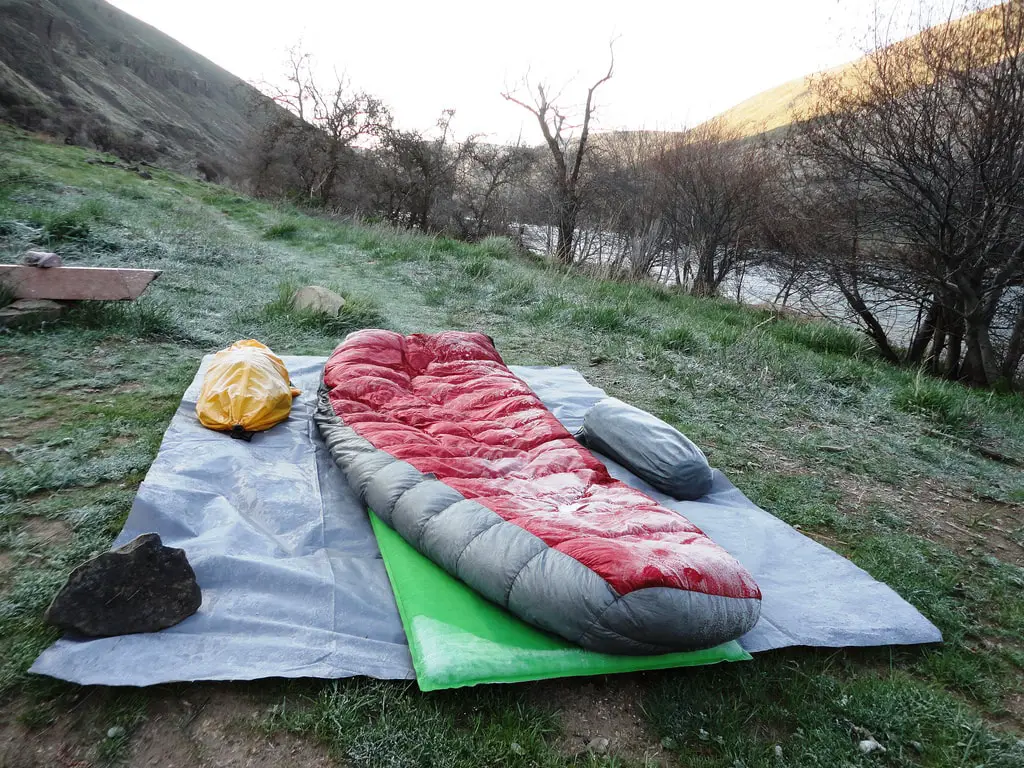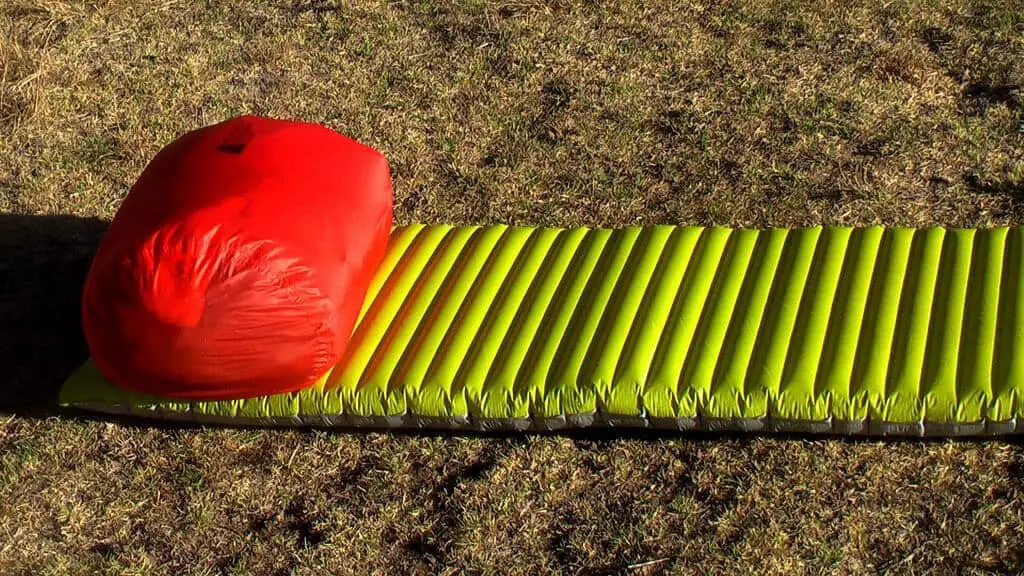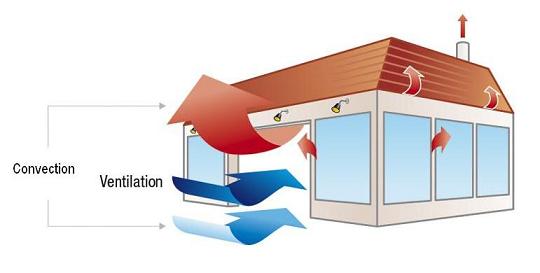Waking up in a damp sleeping bag is a terrible feeling I am personally familiar with. It has a terrible impact on your entire camping experience, and in some cases might get you cold or sick. To make sure that won’t happen again to either of us, I’ve decided to research that issue profoundly and look for some answers.

In this article, I will describe possible reasons for that to happen.
Your sleeping bag would get damp because of condensation that might come from the outside, or otherwise – your own body. It may also be due to an inappropriate water-resistant tent floor or sleeping bag.
Possible Reasons
A Lot of Condensation With a Double Wall Tent
If you have a tent that is by definition waterproof, there is a high chance it features a double wall.
So what is a double wall tent and how come you still get damp? Let’s start with the first question.
A double wall tent features two layers – the inner layer, being breathable but not waterproof, and an outer layer – the rainfly, being waterproof but not breathable.
The combination of these two offers sort of breathability with water resistance. Nevertheless, with a considerable amount of condensation, little drops can still get inside.
That is more likely to happen when the rainfly is touching or a part of the inner layer. There is a way to overcome this situation, and it will be described later on.
If you are reading this article and planning on camping with your family, you might find my article about large tents useful as well.
Your Bag Presses Against The Inner Tent
If you are camping with a partner, and you find out that your sleeping bag got damp while the other one didn’t, that might be the reason for it.
We usually don’t share the same height as our partner, so there is a chance the taller one would touch the tent’s inner wall with the legs edge of the sleeping bag.
There are two scenarios if that is the case. If your sleeping bag repels water, you might touch your tents wall, yet, there is a good chance your bag will stay dry.
However, old sleeping bags usually do not feature that. If that is your case, I highly recommend you get a new, water-resistant sleeping bag.
Old Sleeping Bag – No Water Repellent
As I’ve mentioned above, old sleeping bags usually don’t do too well with water. You may buy a new one (Down or Synthetic), with a water repellent outer layer.
Nevertheless, if you wish to stick with your sleeping bag for a bit longer, there are other solutions – one of them would be using a waterproofing spray.
These would improve your sleeping bag (or other clothing) water resistance, although it is important to mention they wouldn’t turn it completely waterproof.
If your issue is too significant, and you own an old sleeping bag, I think that buying a new one would be a better choice.
The Tent’s Floor is Not Waterproof
Another way water might get in your tent and get to your sleeping bag is through the floor.
High quality, modern tents usually feature a water-resistant floor, yet, nothing is ever 100% sealed.
If you suspect water come from beneath, you should take steps to prevent this from happening. First, you can try placing a plastic sheet underneath (or above) your tent.
That hydrophobic layer would stick to your tent floor, ensuring a dry night. Another technique would be spraying it with water repellent sprays such as Nikwax Tent and Gear SolarProof.
The last method would be applying tent sealants, that would cover problematic areas, as mentioned in this guide.
If none of these worked, you might find it easier to get yourself a new tent, ensuring upfront its water resistance capability.
Condensation From Your Breath & Sweat
Well, everybody is perspiring during their sleep, at least to some extent.

Water also vapor while you are breathing through your mouth, and condensate somewhere within your tent.
As your tent floor being the lowest point, it serves as a pool of evaporated water, turning your sleeping bag wet.
Well, body perspiration plays the same role. The second would be more significant because your body directly touches the inner part of your sleeping bag.
Overnight, breath and sweat would accumulate and could play a significant role with your sleeping bag getting damp.
That scenario should be highly suspected if you find your bag damp, although your partner, which is sleeping in the same tent, doesn’t.
That would be because your body might respirate more sweat than your friend’s.
The Rainfly is Too Close to The Tent’s Surface
Rainfly is the outer layer that supposed to keep your tent water resistant. This technique is excellent, however, is not implemented sufficiently in some cases.
Some tents feature a rainfly too close to the inner layer. It is also common that the rainfly and the tent itself share the same stakes.
Why is it so crucial? Well, when the rainfly get soaked with rain or condensation, some drops might go through its edges overnight.
If the rainfly is attached to the inner layer, which is not water resistant, water might penetrate, causing internal wet.
The way to overcome this issue would be a tent which features separate lines for the rainfly. This way the water drainage would be far away, and less likely to penetrate the inner layer.
Suggested Solutions
Get a Sleeping Pad
Getting a sleeping pad may solve the problem in which water gets in through the floor.
Placing it beneath your sleeping bag would answer few requirements. First, it would create insulation between your sleeping bag and the tent’s floor.

While being water resistant, a sleeping pad would ensure that wet ground won’t get your sleeping bag damped.
In addition to that, evaporated water which comes through your breathing won’t be an issue.
That is because, as mentioned, evaporated water tend to end up at the bottom of your tent – which is now far away from your sleeping bag.
Place Something Between Your Feet And The Tent’s Wall
So what about a sleeping bag touching the tent’s wall? As I said, that might get your sleeping bag damped if the inner layer of your canvas is wet due to condensation.
We can’t control our movement during sleep so the best way to avoid that would be placing a gear between your legs and that wall.
That will be a good choice if you have enough space to put something and still maintain comfort.
However, you should make sure the equipment you place is okay with getting wet.
Moreover, by feeling that gear in the morning, you will be able to know if that was the actual reason for your sleeping bag getting damp.
Increase Ventilation
Ventilation is a crucial factor when it comes to damp. If you don’t have proper ventilation, water which gets in (it doesn’t matter how), cannot evaporate out.

So how can you increase your tent ventilation?
If you are planning on buying a new tent, consider choosing one which features enough space between the inner, breathable layer, and the rainfly.
The best way to achieve that is having separated stakes for these two. In addition to that, try picking a tent with built-in vents.
These could be at the roof or the bottom. Frankly, it doesn’t matter.
The more circulation you have inside the tent, the more it is likely that water would evaporate out of it. That, in turn, would decrease your sleeping bag damp significantly.
Zip it a Little
We are all focused on keeping the tent warm. That is important because no one wants to get sick during a camping night.
Keeping it too warm would increase the likelihood of your sleeping bag getting soaked with sweat in the morning.
If you’ve bought a well sleeping bag (down would be great for thermal insulation), then you don’t have to be afraid cooling down a bit your tent.
That could be achieved by merely opening its zipped door a little bit.
Test it for one night. If it has done an excellent job – keep it that way for the rest of your trip. If you felt cold during nighttime – don’t do it again.
How to Avoid Tents Condensation?
Ventilate Your Tent
As mentioned above, that could be achieved by getting a tent which features vents or separated stakes for rainfly or just zipping it open a little bit. Air circulation would allow water to evaporate outside.
Store Wet Equipment Outside
Just as water evaporates from your body sweat, it a from wet gear. If your backpack/jacket/pants/shirt or boots got wet – place it into a plastic bag and leave it outside.
Avoid Camping Near Water
The air around lakes, rivers, and waterfalls tend to be extremely humid. That, in turn, would cause a considerable amount of condensation over your tent. Stick to areas with a good breeze instead.
Do Not Cook Inside
Water which comes from your cooking has nowhere to go besides your tent’s inner layer. For that reason, and mainly for safety, cook and eat outside – leave your tent for sleeping.
Do Not Use Heaters Inside
If you are using a generator and got yourself some heater, turn it off during nighttime.
First of all that wouldn’t be safe, because some heaters produce CO which can cause suffocation.
Also, getting yourself too warm during the night would evaporate sweat all over the place
What to do if My Sleeping Bag Gets Wet?
Wring it Out
Just like wet clothes, that would haste the sleeping bag drying process. It doesn’t matter if your sleeping bag is filled with down or its synthetic – moisture would harm its insulation abilities.
Improvise a Bed
If your sleeping bag is soaked up, and you cannot reach a nearby shelter, you have to improvise.
You can put some leaves and branches beneath your tent, and cover yourself with warm clothes for the night until it dries out.
Bail Out
Let’s admit it – a wet sleeping bag is not something to play with. It could have significant health impact and can get dangerous.
Try to avoid sleeping in it, wear some water resistant clothes and bail at the first opportunity you get.
You may return to your journey when you are equipped better, perhaps with a water-resistant sleeping bag.
Down VS Synthetic Getting Wet
The differences between down and synthetic sleeping bags are widely explained in this article.
In general, both shouldn’t get wet to provide proper thermal insulation. Down perform worse in a damp condition.
Its thin structure loses the air trapping mechanism when getting soaked with water.
So, if your sleeping bag is filled with down and got damp, you should take that seriously and follow the steps above to solve it as fast as possible.
Is it Possible / Should I Waterproof My Sleeping Bag?
There are ways to increase your sleeping bag water resistance. One of these would be with a waterproof spray, that could also help with boots, tents, and clothing.
It is not possible to completely waterproof your sleeping bag, nor you should try doing that.
It is essential your sleeping bag maintains breathability – that is the reason you don’t wake up soaked with sweat in camping mornings.
If your bag gets wet by touching the tent walls – spraying it wouldn’t do much.
Like in medicine, you should deal with the disease instead of its symptoms – find the core reason your sleeping bag gets damp, and fix it. Don’t try to go around this.
Conclusions
A damp sleeping bag is annoying, however an avoidable phenomenon.
The main reason for this to happen is due to water condensation – this, in turn, might come from the rainfly layer touching the inner one, the floor or your body sweat and breath.
There are ways to overcome this issue. For instance, you might increase your tent’s ventilation, or use a sheet or pad beneath your sleeping bag.
You might as well zip your tent’s door a little bit to cool it down and increase ventilation.
I hope these tips would help you and improve your camping experience. Let me know how it was by leaving a comment below!

